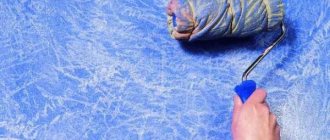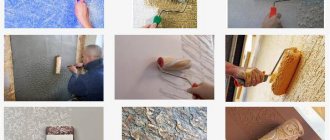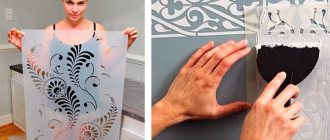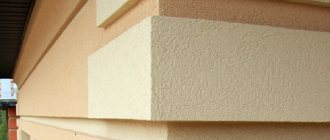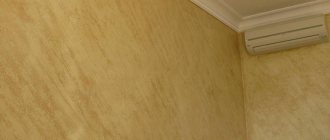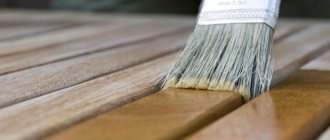Applying textured plaster to a wall using a roller is an activity that does not require any special skills or experience. This is what those who have not yet encountered this type of finishing think. Understanding the subtleties and features of applying decorative plaster will help speed up the process and improve the quality of the result.
What is the textured roller used for?
At its core, a textured roller is a common device that is used for painting work. But the surface of such a device is corrugated and contains a specific pattern. On the Internet you can find many photos of different types of patterns on a textured roller.
Painting products have a soft fleecy or spongy surface. They are used to apply paint to a surface. Textured rollers have a harder surface on which the pattern is applied.
With light pressure on fresh plaster, such a roller will leave a pattern, according to the one applied to the surface itself. The use of textured rollers in rooms where the walls are plastered with a decorative composition is quite popular.
Reference! The shorter the pile on the roller coat, the less prominent the pattern will be.
Types of rollers for decorative plaster
The result that the painter gets directly depends on the surface of the material used. As a rule, the types of rollers are distinguished by the type of material from which the fur coat is made. Today the market provides the following options:
Rubber
This type of roller is made of hard rubber material. The pattern is created thanks to the indentations in the rubber material. Most often, it is on such rollers that an imitation of natural stone is depicted. It is used when you need to create a very relief and textured surface. Is it true. This option is not for beginners, since to achieve the desired result you need to be able to work with rubber rollers.
Plastic
Option at the lowest cost, which affects its quality. The plastic structure fails much faster. After just 2-3 uses, the rollers begin to crack, so you should carefully inspect it before use.
Pile
They are made from both artificial and natural materials. The texture of the pattern will depend on the length of the pile.
Leather
The material is quite expensive, since such rollers are made from genuine leather. Most often used for Venetian plaster.
Reference! It is thanks to the leather roller that a realistic marble coating is created.
In addition, on store shelves you can find tools made of foam, polyethylene and fabric.
Painting the surface correctly
To achieve optimal results, you should use the following tips:
- There is no need to press the tool close to the surface. Try to move carefully, without haste.
- When working with a patterned decorative roller, it is recommended to start a new path from the place where the border of the previous pattern passes. Under no circumstances should the design be overlapped.
- Having reached the ceiling, you need to press the tool to the top, after which you can again continue to work with normal pressing force.
- Use a brush to handle corners, because it is impossible to paint narrow joints with a roller.
- If the relief patterns turn out to be very convex, it is recommended to use a moistened sanding mesh to correct them.
- Painting the surface with a roller with a pattern should be carried out with smooth movements and with a special degree of care. Try to maintain the evenness of the pattern and under no circumstances should you rush. In some cases, when working, you can use special stencils made of dense material.
How to choose a roller for textured plaster
The first step is to decide what end result the consumer wants to get. If the final pattern should be blurry. then the roller coat should be made of a soft surface. For a clearer relief, choose rubber rollers with a dense surface. It is the hard rollers that will allow you to create something like frescoes.
The cost will depend only on the material of the working surface. The most budget options are made of foam rubber and plastic. If you want to choose a more durable roller, give preference to rubber and leather materials.
Reference! For painting, you should use a roller with a telescopic handle.
How to make a roller with your own hands
You can make a textured roller with your own hands. From improvised means or old tools, you can make a design that will be no worse than a professional device. The manufacturing process is simple:
- Create a blank, the basis for which will be a wooden rolling pin.
- A metal pin is inserted into the drilled hole.
- The pin is bent in the form of a handle with a convenient holder.
- The side holes are plugged with glue.
- A pattern is applied to the surface of the rolling pin.
If desired, such a roller is covered with a softer material so that it is not difficult to use the structure. But even without additional materials, such a roller can be used.
Briefly about the main thing
A structural roller for decorative plaster consists of a rod, a nozzle and a handle.
To apply a design with paint, it is possible to attach a second nozzle.
Ready-to-use tools are made of rubber, plastic, wood, and foam rubber.
You can make the device yourself from a simple roller and scrap materials.
The decorative surface is created by applying a design or forming impressions and projections on the plastered surface.
Ratings 0
Roller pattern application technique
The technique of applying a pattern using such a roller is very simple. The algorithm of actions is simple:
- Apply an even layer of decorative composition to the wall.
- The mixture is allowed to dry on the wall for 10-15 minutes to prevent the pattern from bleeding.
- The roller is passed from top to bottom with light pressure, leaving a pattern behind.
This is the basic process of creating a design using a textured roller. What are the subtleties when working with such a tool?
Workflow Description
The procedure for applying putty with a roller is as follows:
- Prepare all necessary materials and tools.
- Mix the putty.
- Pour the prepared mixture into a special container.
- Apply the composition to a previously prepared surface.
Application of the second/third layer is possible only after the previous one has completely dried. A thin layer dries in several hours, a thick layer – from 1 to 2 days. The room should have good ventilation and air humidity from 50-70%, air temperature 5-25°C.
Subtleties of working with a textured roller
The main subtleties of the work are in the following processes:
- When applied vertically, a pattern in the form of rain is obtained.
- The chaotic principle of application is suitable for creating a non-uniform pattern.
- Alternating sides will create a “carpet” covering.
- Spiral movements create the effect of lamb's wool.
- Any pattern is applied in two main stages: pattern formation and smoothing with a trowel.
- When painting a pattern, it is better to use a composition from the same manufacturer as the plaster.
- When applying, do not press too hard on the roller.
- If you wait 15 minutes before creating a design, the material will not be pulled behind the roller, but will be pressed under it.
Interesting! The structural roller is mainly used on a prepared surface using paint.
This is what concerns the basic subtleties of the work.
What to look for when purchasing
A rubber roller designed to form a deep impression can be compared to a pressure paint roller. For such activities, a rubberized handle is desirable, since some effort will have to be made for a long time. The design must be strong and not bend when pressed.
To style it like a fur coat, select a roll with long pile, and the plaster can be applied with a broom. Complex floral patterns are applied with a wooden or rubber roller, but it should be taken into account that wood absorbs water from the paint, among other things. The stencil design on the print must be clear, closed in a circle, have smooth edges, without cracks or scratches. The fibers on textile rollers should be smooth, not caked or crumble.
To create voluminous motifs, the relief on the roller with a pattern for wall decor must match the thickness of the decorative layer.
The fibers on textile rollers should be smooth, not caked or crumble.
Most common mistakes
When working with a textured roller, a number of mistakes are made:
- When plastering, too thick a layer of the mixture is applied, which leads to cracking of the material after drying. To correct the defect, the cracks are widened and filled with plaster.
- If you can’t apply the drawing, it means the base was prepared incorrectly. The procedure can be solved by removing this layer.
- If the plaster crumbles, this indicates that the composition does not like the temperature in the room, or that the application of primer was ignored.
This is what refers to the main mistakes when working with the composition.
Can it be used for wet mix and finishing?
Not only is it possible, but it is also necessary. The roller is designed specifically for liquid materials; it’s hard to even imagine how to work with a spatula with a spreading liquid.
And, if the first layer of putty can be thick, then the finishing layer is better to use liquid. The liquid mixture will create a uniform layer, dry quickly and be suitable for subsequent application of paint or other decor. Most often, such mixtures are self-leveling and easily fill small cracks.
Important ! Applying the finishing putty with a roller must be done perfectly evenly and smoothly, especially before painting, so if any roughness is detected, another layer is applied.
Caring for a textured roller
In order for the structure to serve longer, you need to properly monitor it. How to do it? After using the roller, it is immediately cleaned with a solution; this can be done in ordinary water. Next, it is dried evenly using the hanging method. It is important to ensure that there are no plaster residues in areas with texture.
Important! Wooden rollers react very strongly to water, so you should not keep them in water for too long. It is best to wash such structures with detergent.
Using a roller is not that difficult, but it allows you to create a large number of interesting design solutions. The main thing is to study the instructions for using the textured roller.

